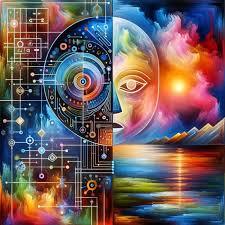Physical Address
304 North Cardinal St.
Dorchester Center, MA 02124
Physical Address
304 North Cardinal St.
Dorchester Center, MA 02124


Math is more than just a set of formulas and rules; It is a deep, interdisciplinary study of patterns, relationships, and logical reasoning at their core. We discover a universe of ideas by studying mathematics, which helps us understand the world, solve difficult problems, and incite creativity. You are invited to embark on a journey through the study of mathematics by this article, which highlights its fundamental areas and the significance of this study.
1. The Adventure Begins with Numbers The fundamental building blocks of mathematics, numbers, often serve as the foundation for an investigation into the subject. Numbers can be as straightforward as counting (1, 2, 3, etc.) or as complicated as irrational numbers like 2 and imaginary numbers like -1. Beginning with the fundamentals of addition, subtraction, multiplication, and division, this journey moves on to more advanced topics like number theory.
Number theory investigates properties of numbers, including primes, distinguishableness, and particular math. Although it may appear to be abstract, this branch of mathematics has practical applications in cryptography, which is essential for protecting digital communications.
2. Algebra: Algebra’s introduction of variables and symbols to represent values that are unknown extends the exploration of numbers. Equations are solved and the relationships between quantities are understood in elementary algebra. It serves as a foundation for higher-level mathematics and is necessary for modeling and solving mathematical problems.
You’ll come across “abstract algebra,” which studies algebraic structures like groups, rings, and fields as you go deeper. These structures reveal intricate patterns and relationships that can be used in computer science and physics.
**3. Geometry: The study of shapes, sizes, and the properties of space is the focus of the mathematical discipline known as geometry. Geometry provides a rich terrain for exploration, ranging from the simplicity of “Euclidean geometry,” which studies flat surfaces and fundamental shapes like triangles and circles, to the complexity of “non-Euclidean geometries,” which study curved spaces.
The fascinating field of study known as “fractal geometry” deals with intricate shapes that exhibit self-similarity at various scales. These fractals, such as the Mandelbrot set, bridge the gap between mathematics and nature by appearing in both natural phenomena and artistic designs.
4. Calculus: Analyzing Change and Continuity Calculus is essential for comprehending dynamic systems because it investigates the concepts of accumulation and change. Derivatives, which measure how functions change in relation to their inputs, are the primary focus of differential calculus. This subfield is essential for understanding motion and forces in fields like physics.
On the other hand, integrals, which represent the accumulation of quantities, are the subject of integral calculus. Areas, volumes, and other quantities related to continuous change can be calculated with it. When used together, differential and integral calculus provide a potent set of tools for figuring out and resolving real-world problems and complex systems.
5. Statistics and Probability: Data Interpretation and Uncertainty The study of probability and statistics offers instruments for managing uncertainty. Probability** is the study of how likely events are and how random processes can be modeled. It is utilized in numerous fields, including genetics and risk assessment in finance.
To make informed decisions, “statistics” entails collecting, analyzing, and interpreting data. Trends, predictions, and conclusions can be drawn from data using methods like regression analysis and hypothesis testing.
6. Mathematical Discreteness: Algorithms and Structures Discrete mathematics is important for computer science because it deals with countable, distinct structures. Among the most important branches of discrete mathematics are “combinatorics,” which investigates counting and arrangement, and “graph theory,” which examines networks of interconnected objects.
Fundamental to computing are “algorithms,” which are step-by-step procedures for resolving issues. They demonstrate the practical applications of mathematical exploration by driving everything from search engines to data encryption.
Conclusion** Mathematics exploration is a journey that reveals patterns, relationships, and logical reasoning’s beauty and depth. Each discipline offers unique insights and applications, ranging from the fundamentals of algebra and arithmetic to the complexities of calculus, probability, and discrete mathematics. We gain a deeper understanding of the interconnectedness of mathematical ideas and their impact on a variety of fields by engaging in mathematical exploration, in addition to improving our problem-solving abilities. Math is more than just numbers and formulas; It is a fascinating, enlightening journey that shapes our perception of the world and drives innovation.
photoshop crack
phohoshop 2025
adobe photoshop crack
photoshop keygen
photoshop free